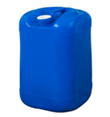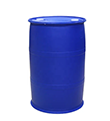| CAS No. | 26172-55-4, 2682-20-4 | EINECS No. | 229-146-5 |
| Molecular Formula | C4H4ClNOS, C4H5NOS | Molecular Weight | 115.16 |

| 2-methyl-4-thiazoline-3-ketone | 5-chloro- methyl-4-thiazoline-3-ketone |
| CAS No. 2682-20-4 | CAS No. 26172-55-4 |
Isothiazolinones (CMIT/MIT) is mixture of 5-chloro-2-methyl-4-thiazoline-3-ketone (CMIT) and 2-methyl-4-thiazoline-3-ketone (MIT). Miscible with water.
Isothiazolinones (CMIT/MIT) is a super strong, broad spectrum, high efficiency, low toxicity and non-toxic emerald green modifier product.
Isothiazolinones (CMIT/MIT) is the ideal biocidal in industrial circulating cool water system and in wastewater treatment in building materials, architectural coatings, adhesives, textiles, oilfield, paper industry,concentrated feed, power generation, green fertilizer, pesticide, cutting oil, leather, detergent and cosmetics etc..
Isothiazolinones (CMIT/MIT) has strong inhibition and biocidal effects on ordinary bacteria, fungi and alga, and has many advantages such as high biocidal efficiency, good degradation, no residual, safety in operation, good compatibleness, good stabilization, low cost in operation.
The bactericidal effect of Isothiazolinones (CMIT/MIT) is carried out through breaking the bond between bacteria and algae protein. When contacted with microbes, Isothiazolinones (CMIT/MIT) can quickly inhibit their growth, thus leading to death of these microbes.
Isothiazolinones (CMIT/MIT) can mix with chlorine and most cation, anion, and non-ionic surfactants. When used at high dosage, its biosludge stripping effect is excellent.
Notes: 2%, 2.5%, 3%, 4% and 8% or any concentration can be supplied on demands.
| Parameter | Standard | |
|---|---|---|
| I | II | |
| Appearance | Amber transparent liquid | Light yellow or light green transparent liquid |
| Active content, % | 14.0 min | 1.5 min |
| pH (as it) | 2.0-4.0 | 2.0-5.0 |
| Density (20℃), g/cm3 | 1.26-1.32 | 1.02-1.05 |
| CMI/MI(wt%) | 2.5-3.4 | 2.5-3.4 |
Miscible with water; can be added in any production step; easy to use.
Suitable for use in the medium of the pH value in the range of 2 to 9; free of divalent salt, cross-link no emulsion.Not suitable for use in the alkaline medium of pH> 9.0 due to its poor stability. Any combination of this chemical with highly nucleophilic chemicals, like S2- and R-NH2, will lead to declined quality or even complete failure of the product.
In water treatment applications, dilute it into a 1.5% aqueous solution first. Add the solution at a quantity of 80 to 100 ppm for one or two times each week depending on the multiplication of microorganisms like bacteria and algae.
When used as sludge stripper for grade II, the dosage of 150-300mg/L is preferred, when used as boicide, the dosage of 80-100mg/L is preferred, and charges every 3-7 days. No used together with oxidative fungicidal such as chlorine, and no used in cooling water system containing sulfur. When used together with quaternary amine, the effect will be better. When used as industrial fungicide, the dosage of 0.05-0.4% is preferred. The application of isothiazolinone Kathon anticorrosion (CMIT/MIT) not only improves product quality, but also reduces costs, greatly improving product shelf life, water recovery and sustainable utilization of tap water sites.| 25kg Bag | 200L Drum | 1000L IBC | |||
 |
 |
 |
|||
| Storage for ten months in shady room and dry place. | |||||
| Hazard Information | Satety Precaution |
|---|---|
|
|
|
| Once contacted with eye and skin, flush with plenty of clean water. | |